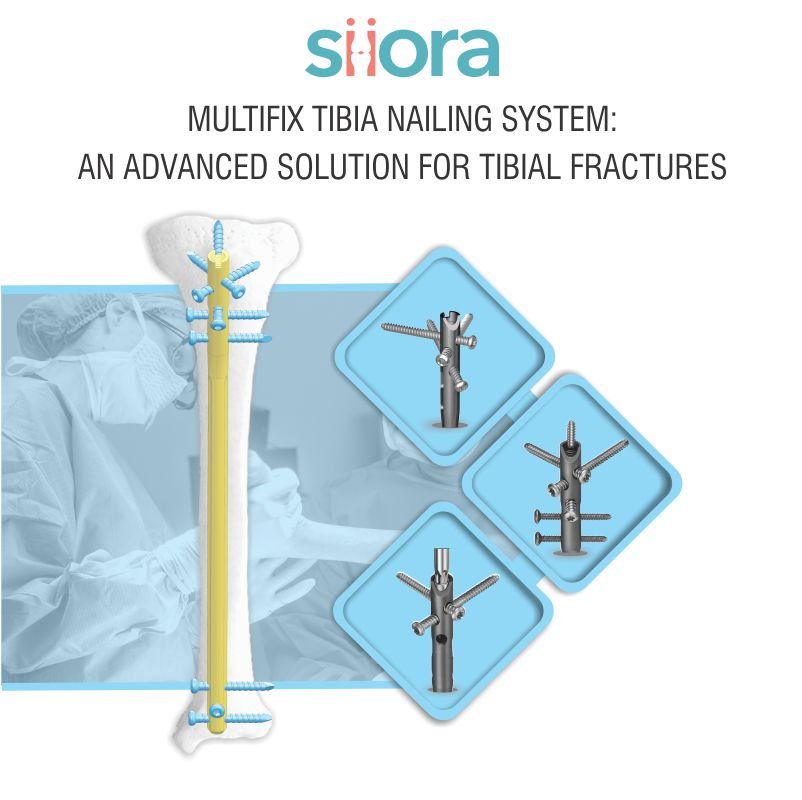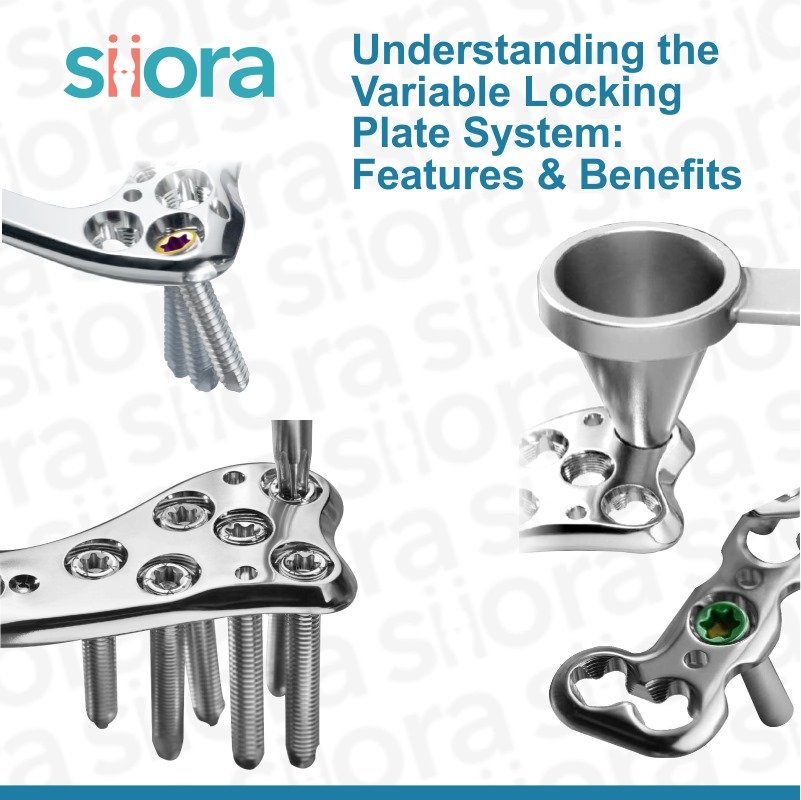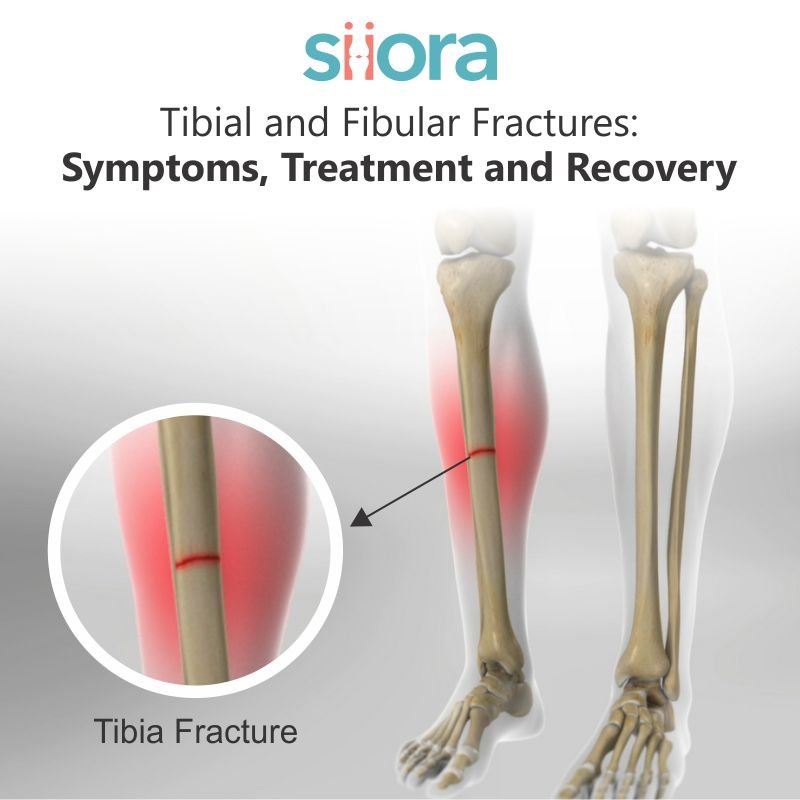Tibial fractures, or fractures of the shinbone, are among the most common long bone fractures. They can result from high-energy trauma, such as car accidents, or low-energy injuries, such as sports-related falls. Treating tibial fractures effectively requires precision and a reliable medical approach to ensure proper alignment, stability, and early mobilization. The Multifix Tibia Nailing System has emerged as an advanced solution for addressing these challenges, providing orthopedic surgeons with an innovative tool to achieve superior patient outcomes.
Understanding Tibial Fractures
The tibia is the larger and stronger of the two bones in the lower leg, and it plays a vital role in weight-bearing and mobility. Tibial fractures can be classified into different types based on the location and nature of the break:
- Proximal Tibial Fractures: These occur near the knee joint.
- Diaphyseal Fractures: These involve the shaft or midsection of the tibia.
- Distal Tibial Fractures: These occur near the ankle joint.
- Open vs. Closed Fractures: Open fractures involve bone protrusion through the skin, while closed fractures do not.
Each type of fracture presents unique challenges and requires a tailored treatment approach to restore functionality and prevent complications.
What Are the Challenges in Treating Tibial Fractures?
Tibial fractures often pose significant treatment challenges due to factors such as:
Complex Anatomy
The tibia is surrounded by vital muscles, nerves, and blood vessels, making surgical intervention delicate.
Weight-Bearing Role
As a primary weight-bearing bone, improper alignment or healing can significantly impact mobility and quality of life.
Soft Tissue Damage
High-energy injuries often result in soft tissue damage, increasing the risk of infection and delayed healing.
Non-Union or Malunion
Without proper stabilization, fractures may heal improperly, leading to deformities or the need for corrective surgeries.
To address these challenges, orthopedic surgeons require advanced fixation systems that offer precision, stability, and versatility. This is where the Multifix Tibia Nailing System excels.
What Is the Adroit Multifix Tibia Nailing System?
The Adroit Multifix Tibia Nailing System is a state-of-the-art intramedullary fixation device designed specifically for the treatment of tibial fractures. It leverages advanced engineering and material science to provide unmatched benefits in fracture stabilization, healing, and patient recovery.
Key features of the Adroit Multifix Tibia Nail System include:
Advanced Locking Options
The system offers multiple locking modes, including static, dynamic, and multi-planar locking, to cater to different fracture types and patient needs.
Precision Engineering
Made from high-strength materials such as titanium alloys, the nails are lightweight yet durable, promoting better biocompatibility and reducing the risk of implant failure.
Customizable Lengths and Diameters
The system accommodates various patient anatomies, ensuring an optimal fit for every individual.
Minimally Invasive Design
The nailing system supports minimally invasive surgical techniques, reducing soft tissue disruption and promoting faster recovery.
Enhanced Screw Configurations
Innovative screw designs improve anchoring and rotational stability, critical for achieving proper alignment.
Radiolucency Markers
Built-in markers enhance intraoperative imaging, allowing surgeons to precisely place the nail and screws.
What Are the Benefits of the Adroit Multifix Tibia Nailing System?
The Adroit Multifix Tibia Interlocking Nail System offers numerous advantages for both patients and surgeons, making it a preferred choice in modern orthopedic practices:
Improved Fracture Stabilization
The system’s advanced locking mechanisms provide superior stability, minimizing micromovements that could delay healing.
Faster Recovery Times
Minimally invasive techniques reduce surgical trauma, allowing patients to begin rehabilitation earlier and regain mobility faster.
Reduced Risk of Complications
The system’s precision engineering minimizes the risk of malunion, non-union, or Implant Failure.
Enhanced Patient Comfort
Lightweight materials and ergonomic designs ensure the implant is less intrusive, promoting better patient satisfaction.
Versatility in Application
From simple diaphyseal fractures to complex multi-fragmentary injuries, the Multifix system caters to a wide range of clinical scenarios.
Cost-Effectiveness
By reducing the need for revision surgeries and facilitating quicker recoveries, the system offers long-term cost savings for both healthcare providers and patients.
Surgical Procedure Using the Adroit Multifix Tibial Nailing System
The surgical procedure for inserting the Multifix Tibia Interlocking Intramedullary Nail typically involves the following steps:
Preoperative Planning
Surgeons evaluate the fracture using imaging techniques such as X-rays or CT scans to determine the appropriate nail size and locking configuration.
Patient Positioning and Incision
The patient is positioned, and a small incision is made near the knee or ankle, depending on the fracture location and surgical approach.
Reaming and Nail Insertion
The intramedullary canal is prepared using reamers, and the nail is inserted with precision to ensure proper alignment.
Screw Placement
Locking screws are placed through pre-designed holes in the nail, stabilizing the fracture and preventing rotational movements.
Closure and Postoperative Care
The incision is closed, and the patient is guided on postoperative care, including weight-bearing restrictions and physical therapy.
The Future of Tibial Fracture Management
The Multifix Tibia Nailing System represents a significant step forward in the treatment of tibial fractures. As technology continues to evolve, future iterations of the system may incorporate advanced features such as smart implants with sensors to monitor healing in real time.
Moreover, ongoing research in biomaterials and biomechanics promises to further enhance the durability and biocompatibility of orthopedic implants, making treatments even more effective and patient-friendly.
Conclusion
Tibia fractures can be life-altering injuries, but modern orthopedic advancements like the Multifix Tibia Nailing System have revolutionized their management. By offering unparalleled stability, precision, and versatility, this innovative system empowers surgeons to deliver exceptional care and helps patients regain their mobility and quality of life more quickly.
Whether you’re an orthopedic professional seeking cutting-edge solutions or a patient exploring treatment options, the Adroit Multifix Tibia Nailing System stands out as a trusted choice for addressing tibial fractures. Its blend of innovation and practicality ensures that it remains at the forefront of fracture management for years to come.








